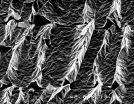(Press-News.org) GAINESVILLE, Fla.--Many loggerhead sea turtles that nest in Dry Tortugas National Park head to rich feeding sites in the Bahamas after nesting, a discovery that may help those working to protect this threatened species.
Researchers from the U.S. Geological Survey used satellites to track the population of loggerheads that nest in the Dry Tortugas - the smallest subpopulation of loggerheads in the northwest Atlantic - and found the turtles actually spend a considerable portion of their lives in the Bahamas, returning to the Dry Tortugas to nest every two-to-five years. They then spend three-to-four months nesting in the Dry Tortugas before returning to the Bahamas.
This new information will help resource managers better identify areas to target for conservation efforts.
"Collaborative conservation efforts focused on protecting important loggerhead residence and foraging areas between the United States and Bahamas could offer significant protection for the Dry Tortugas loggerheads," said USGS Research Ecologist Kristen Hart, lead author of the study. "Two other subpopulations of loggerheads that nest in Northern and Peninsular Florida and also travel to residence areas in the Bahamas would benefit from this protection as well."
The current estimate of the subpopulation of loggerheads that nest in the Dry Tortugas hovers between 258-496 females. Populations of the turtle are difficult to estimate. Loggerheads start nesting when they are approximately 25 years old, and then nest every two-to-five years until they die. Researchers have found that marking females that return to the same beach to nest every two-to-five years is the most practical way to get an indication of population size.
The northwest Atlantic population of loggerhead turtles is listed as "threatened" under the Endangered Species Act, which provides them protection from intentional harm or harvest and protects their most important habitats within the United States and its waters.
In this study, researchers tracked marked turtles over six nesting seasons. Results showed the turtles selected almost the exact same residence area in the Bahamas during their second tracking event. In addition, tracking data showed that individual residence areas generally did not overlap, leading the scientists to believe that loggerheads at this foraging ground may establish territories.
Turtles tagged in more than one Dry Tortugas nesting season showed similar migration paths and timing as compared to their own previous migrations. Their migratory paths included the Florida Strait, a major shipping fairway where ship strikes could threaten the turtles.
After traveling through non-protected waters from the Dry Tortugas, the turtles primarily selected residence areas in non-protected zones once reaching the Bahamas. Although direct turtle harvest has been illegal in the Bahamas since 2009, commercial fishing has the potential to impact the loggerheads' food resources and poses a direct threat to them as they can become entangled in lines attached to gear.
Loggerhead sea turtles are primarily carnivorous and feed mostly on shellfish that live on the bottom of the ocean, such as horseshoe crabs, clams, mussels, and other invertebrates. Their powerful jaw muscles help them to easily crush the shellfish. Once reaching sexual maturity, the turtles nest every two-to-five years, depositing two-to-six clutches of 75 to 120 eggs approximately every two weeks during the nesting season. After nesting, they migrate back to their foraging site.
The Northwest Atlantic loggerhead nesting numbers declined sharply in the 1990s followed by an increase over the last six years making it difficult to assess the trend at this point. Scientists remain concerned about the ongoing threats to this population which include loss or degradation of nesting habitat from coastal development and beach armoring; disorientation of hatchlings by beachfront lighting; nest predation by native and non-native predators; degradation of foraging habitat; marine pollution and debris; watercraft strikes; disease; and incidental take from channel dredging and commercial trawling, longline and gill net fisheries.
Future studies to characterize the resources within residence areas and individual loggerhead behaviors at their residence areas will also help to guide conservation efforts.
INFORMATION:
The study, "Bahamas connection: residence areas selected by breeding female loggerheads tagged in Dry Tortugas National Park, USA," by Kristen M. Hart, USGS; Autumn R. Sartain, a contractor with the USGS; and Ikuko Fujisaki, University of Florida, is available online.
Why do animals fight with members of other species? A nine-year study by UCLA biologists says the reason often has to do with "obtaining priority access to females" in the area.
The scientists observed and analyzed the behavior of several species of Hetaerina damselflies, also known as rubyspot damselflies. For the study, published this month in the print edition of the journal Proceedings of the Royal Society B, researchers observed more than 100 damselflies a day in their natural habitat along rivers and streams in Texas, Arizona and Mexico.
Male damselflies always ...
As the world's exponentially growing demand for digital data slows the Internet and cell phone communication, City College of New York researchers may have just figured out a new way to increase its speed.
Giovanni Milione, a PhD student under City College Distinguished Professor of Science and Engineering Robert Alfano, led the pioneering experiment conducted at the University of Southern California with collaborators from Corning Incorporated, Scotland, Italy and Canada.
"Conventional methods of data transmission use light which has the fastest speed in the universe. ...
Polymer science will have to add a new giant molecule to its lexicon thanks to a cutting-edge discovery at The University of Akron. Taking a revolutionary "building blocks" approach, researchers have pioneered a way to create a new class of very large polymer molecules, called macromolecules, which assemble themselves into strong, stable structures. The work has been done in collaboration with researchers at Peking University in China and The University of Tokyo in Japan. Their findings have been published in the April 24, 2015 issue of Science magazine.
A team led by ...
We know of about two dozen runaway stars, and have even found one runaway star cluster escaping its galaxy forever. Now, astronomers have spotted 11 runaway galaxies that have been flung out of their homes to wander the void of intergalactic space.
"These galaxies are facing a lonely future, exiled from the galaxy clusters they used to live in," said astronomer Igor Chilingarian (Harvard-Smithsonian Center for Astrophysics/Moscow State University). Chilingarian is the lead author of the study, which is appearing in the journal Science.
An object is a runaway if it's ...
You think that your immune system is there to protect you. But what happens when it starts working against you?
In the earliest stages of cancer formation, the immune system is forced to make a momentous decision. It either activates and suppresses tumor growth to help the body fight disease, or it becomes dysfunctional, helping the tumor grow and making treatment more difficult. Because this tipping point occurs before a person even realizes something is wrong, doctors are unable to directly observe this critical stage.
"We believe that when immune cells enter a tumor ...
WORCESTER, MA - Scientists at the University of Massachusetts Medical School have applied a powerful tool in a new way to characterize genetic variants associated with human disease. The work, published today in Cell, will allow scientists to more easily and efficiently describe genomic variations underlying complex, multi-gene diseases.
"Up to this point, we've only been able to investigate one disease-causing mutation at a time," said principal investigator Marian Walhout, PhD, co-director of the Program in Systems Biology and professor of molecular medicine at UMMS. ...
The oncologists Manuel Hidalgo, Director of the Clinical Research Programme of the Spanish National Cancer Research Centre (CNIO), and Ignacio Garrido-Laguna, member of the Experimental Therapeutics Program at Huntsman Cancer Institute of the University of Utah (USA), have recently published a review of state-of-the-art clinical treatments for pancreatic cancer -- including the most current therapies and innovative research -- in the prestigious scientific journal Nature Reviews Clinical Oncology.
In their study, which reviews around 200 scientific articles published ...
PROVIDENCE, R.I. [Brown University] -- Using a technique that introduces tiny wrinkles into sheets of graphene, researchers from Brown University have developed new textured surfaces for culturing cells in the lab that better mimic the complex surroundings in which cells grow in the body.
"We know that cells are shaped by their surroundings," said Ian Y. Wong, assistant professor of engineering and one of the study's authors. "We've shown that you can make textured environments for cell culture fairly easily using graphene."
Traditionally, cell culture in the lab has ...
An enzyme secreted by the body's fat tissue controls energy levels in the brain, according to new research at Washington University School of Medicine in St. Louis. The findings, in mice, underscore a role for the body's fat tissue in controlling the brain's response to food scarcity, and suggest there is an optimal amount of body fat for maximizing health and longevity.
The study appears April 23 in the journal Cell Metabolism.
"We showed that fat tissue controls brain function in a really interesting way," said senior author Shin-ichiro Imai, MD, PhD, professor of ...
Dolphins that raise their voices to be heard in noisy environments expend extra energy in doing so, according to new research that for the first time measures the biological costs to marine mammals of trying to communicate over the sounds of ship traffic or other sources.
While dolphins expend only slightly more energy on louder whistles or other vocalizations, the metabolic cost may add up over time when the animals must compensate for chronic background noise, according to the research by scientists at NOAA Fisheries' Northwest Fisheries Science Center and the University ...



